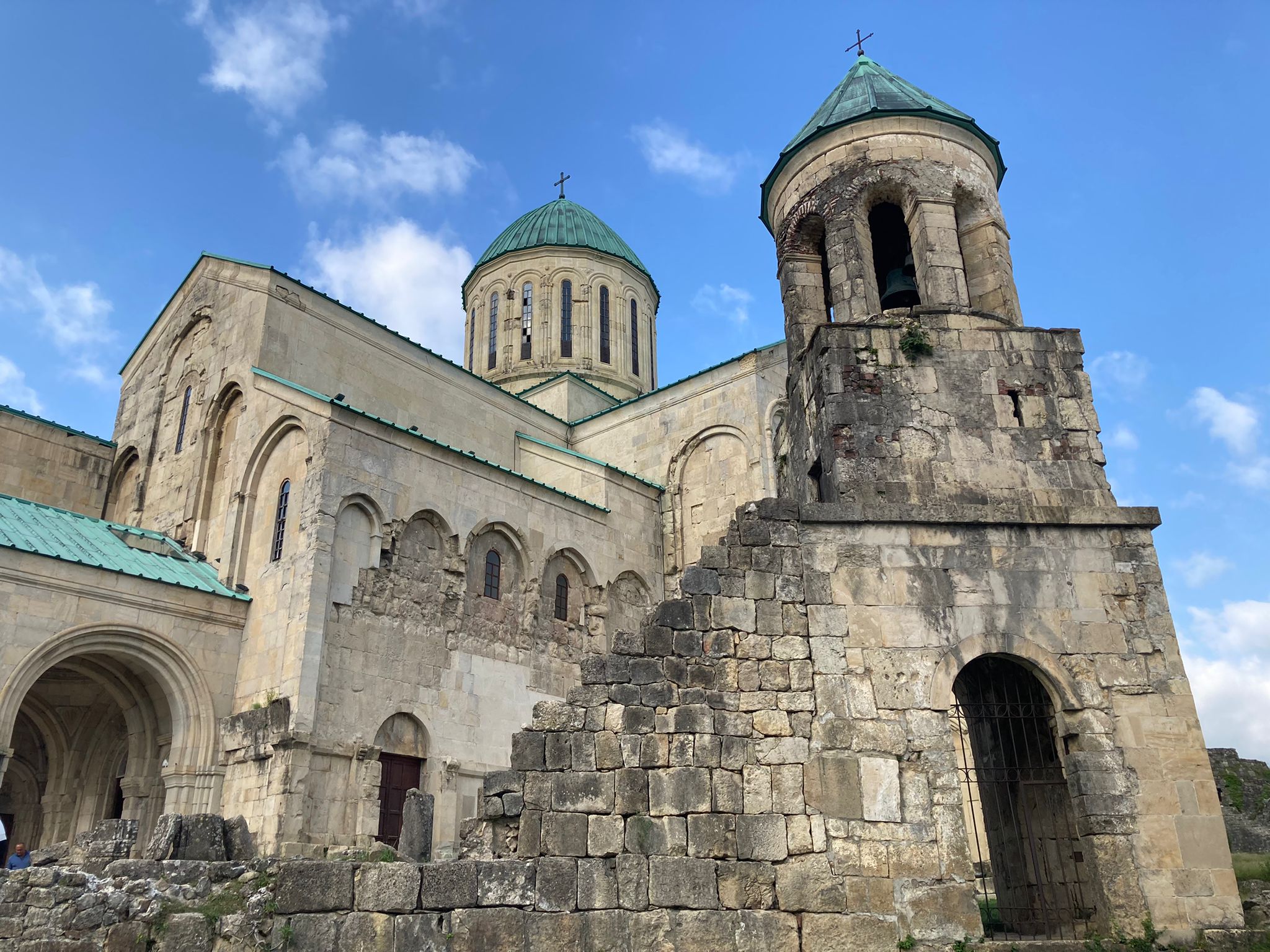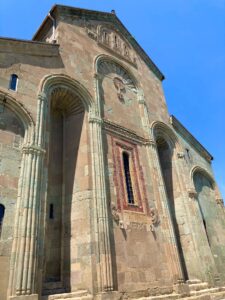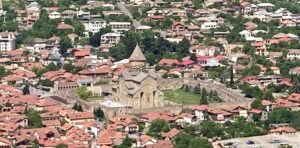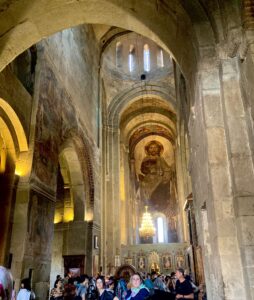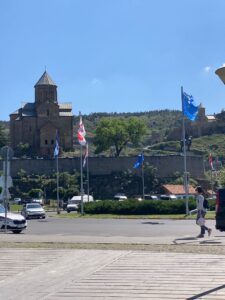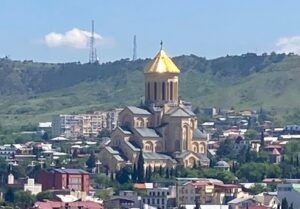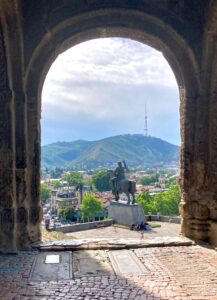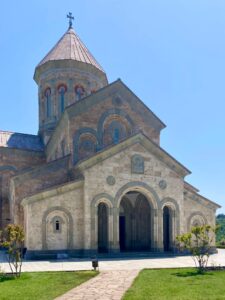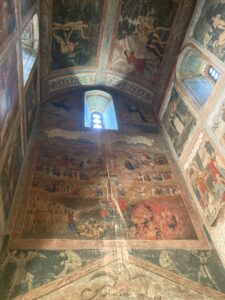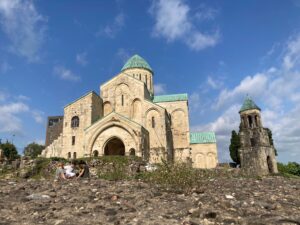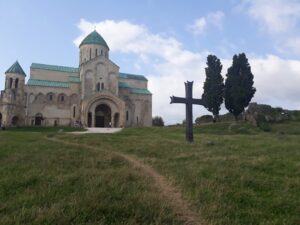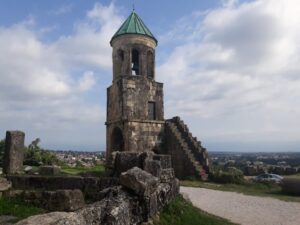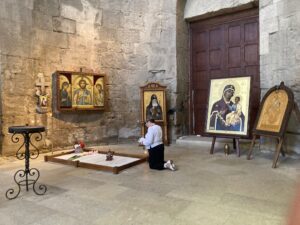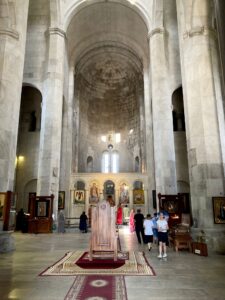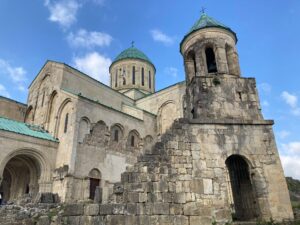While studying abroad in Georgia, we visited many fascinating churches. Georgia’s Orthodox Church is among the oldest in the world, so the cathedrals have extensive histories and hold an important place in the country’s Orthodox culture. In addition, the unique architecture gives each church a special ambience and beauty. The following cathedrals were some of my favorite among the ones we visited.
Svetitskhoveli Cathedral
Completed: 1029
Svetitskhoveli Cathedral is recognized as one of the most significant Orthodox Churches in Georgia. It is located in one of the country’s oldest cities and former capital, Mtskheta. Under the direction of St. Nino, King Mirian began construction on the cathedral in the early 11th century, completing it in 1029. This original church was a sizable achievement for its time, but unfortunately it did not survive. The grounds and framework of the church have been repaired and restored several times since its original completion due to external factors such as earthquakes (13th century) and invasions (14th century). Over the years, the cathedral also became the burial site for many Georgian kings. It is currently recognized as a UNESCO World Heritage Site.
Metekhi Cathedral
Built: 6th Century
Metekhi Cathedral is one of Tbilisi’s oldest churches (6th century) and is situated on the left side of the Mtkvari River. Its name comes from the icon of the Mother of God of Metekhi in the church. The cathedral’s main sanctuary holds the tomb of St. Shushanik, an Armenian holy queen and martyr. Her remains were transferred to Metekhi at the beginning of the 7th century when the Armenian and Georgian churches split. According to legend, Abo, the patron saint of Tbilisi, was tortured at Metekhi rock where a small church was later erected in his honor.
Bodbe Monastery
Founded: 4th Century
Completed: 17th Century
Bodbe Monastery of St. Nino in Kakheti, Sighnaghi, was built on the burial site of Saint Nino, one of Georgia’s most important and revered saints. Nino traveled to Bodbe to put a cross there, and she continued living in the region until her death. The monastery was built to house her grave. As a result, it quickly became a religious and cultural center for the Kakheti region. Kakhetian kings were crowned here, and there was a school for painting and needlework. The church of St. Nino was rebuilt in its place given that the original monastery was destroyed during the Bolshevik invasion. Adjacent stands the church of St. George of the 9th century. This temple is built in the Russian-European style and is covered in frescoes. Pilgrims visit the monastery annually on January 14 to worship St. Nino and drink water from the holy spring.
Bagrati Cathedral
Completed: 1003
Bagrati Cathedral sits proudly on the hill of Ukimerioni and overlooks the city of Kutaisi. It was built in 1003 and was consecrated in honor of the Assumption of the Virgin Mary. During the cathedral’s construction, Bagrat III ruled as united Georgia’s first king, and therefore the church has come to be an important symbol of unity and strength. The north and south arms of the building extend out as part of a cross architectural plan, and the interior walls and floors are decorated with mosaics.

